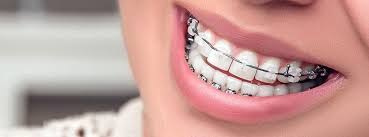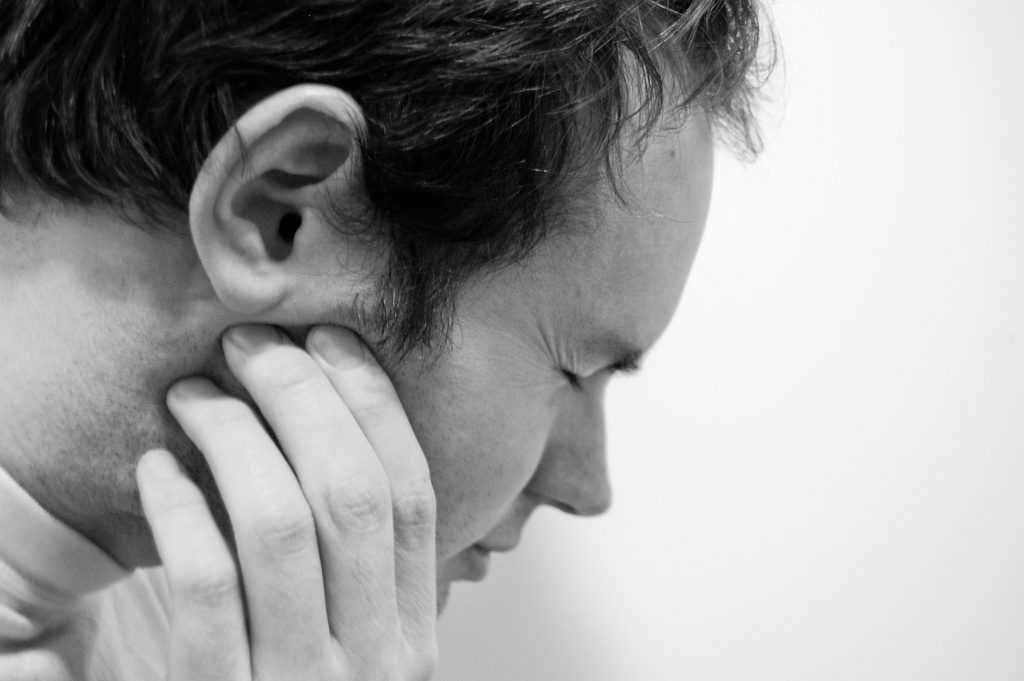KEEPING TEETH STRAIGHT AFTER BRACES
February 28, 2019
You have spent thousands of dollars to straighten your son’s or daughter’s teeth with an orthodontist, and then a year or two down the road when you ask them where their retainers are, they answer, “I don’t know.” Sound familiar? Long-term compliance use of retainers is an issue. Here is the latest research and my thoughts on keeping your kid’s teeth straight.
Studies show and should not be surprising that the average patient compliance decreases dramatically the longer a patient is out of treatment, and is abysmal at five years following treatment.
There are basically three methods used to retain teeth after braces: a clear, vacuum-formed retainer (typically referred to as an Essix retainer), a hard, pink, plastic retainer with a wire in the front (typically referred to as a Hawley-type retainer), and a bonded wire, which is splinted to the back of the teeth. Obviously, the bonded wire has the best compliance because nothing has to be “worn” but it has its own issues – namely, it only keeps the front teeth straight and flossing compliance is poor because it is a pain-in-the-neck to do.
The most recent studies I have seen suggest using the clear, vacuum-formed retainers for a year or two, and then moving into the Hawley-type retainer. The reasoning is that it is has been shown that kids are more compliant initially with the clear retainers because it is a relief to get rid of all the wires. However, after a while, those types of retainers lose their “memory” and they get pretty nasty looking and stained, which decrease their compliance.
Personally, after I got my braces off about 10 years ago, I had a lower “fixed” wire bonded to the inside of my lower front teeth and a hard “night guard” type of appliance made to retain my upper teeth. This provides very good long-term retention.
Another great system for long-term retention after orthodontics is a system developed by Invisalign called Vivera. Here’s how it works. You have impressions taken after orthodontics with your teeth in their ideal position. Invisalign creates a digital model of the teeth that stays on file. They send you (4) sets of retainers, which look like the Essix-type retainers, although they are made from the harder type Invisalign material. At the end of the first year you throw out the retainers you have been using and use the second set for another year. This provides excellent retention for four years.
Every year you change the retainers the new retainers feel really tight because the teeth have moved slightly over that time because of some memory loss. However, the “new” set of retainers was made from the original model, therefore the teeth are moved back to their starting position. After the four years you order another (4) sets of retainers made from that stored digital impression. Guaranteed retention provided there is good compliance.
The cost of the (4) sets of Vivera retainers is about $600. That’s $150 per year to guarantee the teeth stay straight. Worth it? I think so after spending thousands to straighten the teeth.
Dr. St. Clair maintains a private dental practice in Rowley and Newburyport dedicated to health-centered family dentistry. If there are certain topics you would like to see written about or questions you have please email them to him at jpstclair@stclairdmd.com. You can view all previously written columns at www.jpeterstclairdentistry.com/blog.
Sleep Apnea and Weight Loss: Are They Related?

Sleep apnea is one of the foremost medical problems facing American society. Fortunately, there are many ways that a sleep dentist can help to treat the problem, from spotting common symptoms to crafting a customized anti-apnea appliance. But part of the process of treating apnea is correcting the misconceptions that have grown up around the condition. With that in mind, let’s look at some of the most common beliefs about apnea and weight loss.
The Truth about Apnea and Weight Loss
First let’s consider three things that medical experts know for sure:
- People who are overweight are more likely to suffer from sleep apnea and vice versa. The two problems often occur together.
- Not all apnea patients are carrying around extra pounds, however. Many of them are well within normal weight ranges for their height and body frame.
- Losing weight might make apnea symptoms less severe. But the odds of weight loss alone eliminating the condition are slim. Most patients will still require therapy in the form of a CPAP device, surgery, or a dentist-made mouthguard.
As you can see, there’s a strong correlation between sleep apnea and excess weight. But not all people who suffer from one condition also suffer from the other. Nor is it possible to “cure” one problem by getting rid of the other. While many people can and do manage their own weight loss, sleep apnea always requires professional care.
Now let’s look at ways a sleep dentist can help you to enjoy better rest. These include:
- Performing a complete exam of the mouth, throat, and sinus passages. Certain people are at high risk of apnea due to restricted airways or other physical characteristics. A dentist is often the first medical professional to spot these warning signs.
- Providing a referral to a sleep physician for a formal study, also known as a polysomnogram (PSG). This may occur at an authorized medical center or, in some cases, in the patient’s home. Professional medical equipment is used to monitor the patient’s breathing, oxygen levels, heart rate, blood pressure, and sleep behavior.
- Creating a customized oral appliance to treat airway obstruction. This is sometimes used as an alternative to a CPAP mask. These products are not the same as over-the-counter mouthguards you may have seen online or in infomercials, which provide only minimal benefits if any at all.
- Recommending sleep coaching tips. For example, some people breathe normally while sleeping on their sides but develop apnea symptoms when rolling over onto their back. Your dentist may suggest ways to remain in an optimal position while at rest. Sometimes this can be accomplished using a specially made brace or harness.
Better Rest for a Better Life
Getting adequate amounts of quality sleep is essential for all of us. Self-care in the form of exercise and sound nutrition is important for achieving this goal. But correcting the symptoms of apnea takes professional help. See your dentist or other healthcare professional soon to discuss your treatment options. You’ll soon be on your way to a healthier, happier, more productive life.
About the Author
Dr. St. Clair has been practicing dentistry for 23 years, since earning his dental degree from Tufts University School of Dental Medicine. He’s a member of the American Dental Association (ADA) and the American Association of Dental Sleep Medicine. You can reach his office online or by calling (978) 948-2030.
LIFE SAVER
February 25, 2019
You’ve heard it before – three in four adults over 35 have some form of gum disease. And a preponderance of new clinical research reveals that gum disease poses a far greater threat to health than just losing a tooth. Periodontal disease may actually increase your risk for a variety of health concerns including heart attacks, low birth weight babies, diabetes and stroke.
Dr. Isadore Rosenfield, Health Editor of PARADE magazine – “People with chronically infected gums have twice as much heart disease as the rest of us. We have an imperative to treat gum disease – to save not only teeth but also patients.”
Dr. Steven Offenbacher, director of the Center for Oral and Systemic Disease at the University of North Carolina at Chapel Hill – “In many ways, periodontal disease is like high blood pressure – it’s painless and only becomes evident when it’s quite severe.”
All gum disease begins with the accumulation of plaque, a sticky deposit of bacteria, mucus and food particles that build up along the gum line and between the teeth. Plaque can cause gingivitis – inflammation of the gums. Plaque must be removed daily to prevent buildup. Brushing and flossing, coupled with a minimum of twice-yearly professional cleanings, will combat gingivitis in most people.
There is a strong genetic component to periodontal disease. One of the questions I always ask my patients is whether or not they know their familial history with regards to gum disease. If a patient says, “Well, my parents both had dentures”, then there is a strong possibility that patient has the gene for gum disease. There are only two main reasons that people lose teeth – gum disease and decay – and the prior is far more likely.
If gingivitis is not treated, or is treated too late, the result can become periodontitis. This occurs when plaque invades beneath the gum, turning into a hard substance called tartar or calculus. Calculus can only be removed during a professional cleaning. At the stage, skilled care is essential to stave off tooth loss. In more advanced cases, a procedure called scaling and root planing is performed to remove hidden plaque and tartar from below the gum line.
Do you have gum disease? Warning signs may not be evident to you but may include red, swollen, tender, bleeding or receding gums; loose teeth; persistent bad breath; changes in tooth position; and the development of pockets between gums and teeth. It used to be that your dentist could only diagnose periodontal disease from x-rays that showed loss of bone around teeth. Today, gum disease and periodontal disease can be successfully treated BEFORE teeth get loose from bone loss.
Your hygienist and dentist can measure the pockets and bleeding points around your teeth and institute non-surgical treatment before you suffer the irreversible bone destruction of periodontal disease. So remember – the hygienists of the 21st century don’t just clean teeth – THEY SAVE LIVES!
Dr. St. Clair maintains a private dental practice in Rowley and Newburyport dedicated to health-centered family dentistry. If there are certain topics you would like to see written about or questions you have please email them to him at jpstclair@stclairdmd.com. You can view all previously written columns at www.jpeterstclairdentistry.com/blog.
“INSURANCE”
February 19, 2019
I think it is safe to say that our healthcare system has some flaws. Wouldn’t it be nice to have a healthcare system that realized that everything in the body is connected? Unfortunately, there are no reasonable solutions for this in the near future. Therefore, it is important for you to take your health into your own hands and plan appropriately.

Patients will sometimes balk at treatment not covered by their dental insurance. Dentists will often hear, “Just do what my insurance covers. I don’t want anything extra.” In fact, a recent ADA poll showed that a lack of dental insurance was the #1 reason most patients gave for not visiting a dentist. Here are some frequent questions patients often ask about dental insurance.
Why doesn’t my insurance cover all of the costs for my dental treatment?
Dental insurance isn’t really insurance (defined as a payment to cover the cost of a loss) at all. It is a monetary benefit, typically provided by an employer, to help their employees pay for routine dental treatment. “Dental Insurance” is only designed to cover a portion of the total cost.
But my plan says that my exams and other procedures are covered at 100%.
That 100 percent is usually what the insurance carrier allows as payment towards a procedure, not what your dentist may actually charge. Dentist’s fees are usually a reflection of the level and quality of care in a particular office. Some cost more, some cost less, depending on the costs of running their office, how much they pay their staff, the materials they use, etc. An employer usually selects a plan with a list of payments that corresponds to its desired premium cost per month. Therefore, there usually will be a portion not covered by your benefit plan.
If I always have to pay out-of-pocket, what good is my insurance?
Look at medical insurance. Many people have been forced into high deductible plans ($2000 or more). Most dental plan deductibles are $50. While dental insurance is far from ideal, any amount that reduces your out-of-pocket expense helps.
Why is there an annual maximum on what my plan will pay?
Although most maximum amounts have not changed in 30+ years, a maximum limit is your insurance carrier’s way of controlling payments. Dental plans are different from medical plans, in that dentistry is needed frequently. Medical emergencies are rare. It is your dentist’s responsibility to recommend treatment based on diagnosis and treatment planning of what is appropriate for your dental health, not necessarily what your dental plan covers.
If my insurance won’t pay for this treatment, why should I have it done?
It is a mistake to let your benefits be your sole consideration when you make decisions about dental treatment. People who have lost their teeth often say that they would pay any amount of money to get them back. Your smile, facial attractiveness, ability to chew and enjoy food, and general sense of well-being are dependent on your teeth.
Other than complaining to your dental insurance company or your Employee Benefits Coordinator, your best defense is to budget for dental care. First, find a provider based on a personal fit for you. That is the single most important thing you can do. If that office can’t work with you financially then I would find another office.
Dr. St. Clair maintains a private dental practice in Rowley and Newburyport dedicated to health-centered family dentistry. If there are certain topics you would like to see written about or questions you have please email them to him at jpstclair@stclairdmd.com. You can view all previously written columns at www.jpeterstclairdentistry.com/blog.
DIG DEEPER
February 11, 2019
Disease is defined as, “a disorder of structure or function in a human, animal, or plant, especially one that produces specific signs or symptoms or that affects a specific location and is not simply a direct result of physical injury.” Symptoms are those which are felt and signs are those which are seen. Disease may show signs but no symptoms. Two areas dentists see signs of, often without symptoms, are bruxism (grinding)/clenching and GERD or gastroesophageal reflux disease, causing chemical erosion of the teeth.
Some people present with symptoms relating to these two issues, but more often than not, people do not have symptoms. Dental patients who present with signs of tooth wear or acid destruction are riskier to treat. Riskier because the “issues” are often times, and maybe even most often, not treated. This is a significant reason for tooth structure breakdown and shorter life-span of dental work.
However, that’s not really what I wanted to highlight in this week’s column. There are many reasons why people have these two issues. Sometimes these problems are preventable with simple lifestyle changes; other times they need more aggressive treatment because they are coming from the central nervous system or related to something else going on in the body. They can also be caused by certain medications.
In today’s world, everyone is being pushed to their limits in just about every aspect that you can imagine. More is demanded with less time to accomplish. All this can become a source of stress, anxiety and even depression.
This “epidemic” spurred the development of newer medications with fewer side effects to help manage these conditions and hence, the SSRIs (selective serotonin reuptake inhibitors) were born in 1988. Since then, recent reports show that the use of the SSRIs (i.e. Paxil, Zoloft, Prozac, Celexa, Effexor, etc.) has increased more than 400 percent!
Dentists see the signs of bruxism or clenching/grinding of the teeth on a regular basis, and some of it is the result of stress and anxiety. But another factor that we have to keep in mind is that patients are now taking more anti-anxiety and antidepressants than ever before in history. It is often overlooked, but the SSRIs and even some of the SSNRIs (Selective Serotonin Norepinephrine Reuptake Inhibitors) often increase bruxism or clenching and grinding effects at night.
This leads to patients having an increased frequency of headaches, jaw pain and other symptoms of clenching/grinding. I have seen many patients who have presented with increased frequency and intensity of symptoms shortly after the patient starts on these medications. I have found that sometimes a change in medication or reduction in the dosage with the help of the prescribing medical doctor can help.
Sleep breathing disorders, not necessarily just sleep apnea, can also be related to reflux and clenching/grinding. These are often seen as defense mechanisms of the body against airway resistance. Again, symptoms may or may not be present.
You should certainly discuss any symptoms you have with your dentist and physician. If you don’t have any symptoms but your provider can show you evidence of disease, be open to digging deeper to try to determine the underlying cause. Everything is connected.
Dr. St. Clair maintains a private dental practice in Rowley and Newburyport dedicated to health-centered family dentistry. If there are certain topics you would like to see written about or questions you have please email them to him at jpstclair@stclairdmd.com. You can view all previously written columns at www.jpeterstclairdentistry.com/blog.
LIPS TOGETHER – TEETH APART
February 4, 2019
There are many people who suffer with pain involving some area of the head. Toothaches can cause pain, but these are mostly avoidable with proper diet, home care and regular visits to your dentist. Teeth can also play an indirect role in facial/head pain.
Orofacial pain includes a number of clinical problems involving the chewing (masticatory) muscles and/or temporomandibular joints (TMJs). Problems can include TMJ discomfort involving muscle spasms in the head, neck, shoulders and/or jaw, migraines or other types of tension headaches, pain with the teeth, face or jaw; and can even play a role in anxiety and/or depression.
You swallow approximately 2,000 times per day, which causes the upper and lower teeth to come together and push against the skull. People who have an unstable bite, missing teeth, or poorly aligned teeth can have trouble because the muscles work harder to bring the teeth together, causing strain. People with seemingly good teeth/bite are also susceptible. Pain can also be caused by clenching or grinding teeth, trauma to the head and neck, or poor ergonomics. Temporomandibular disorders (TMD) affect more than 10 million Americans. Your TMJ’s are located where the skull connects your lower jaw to the muscles on the sides of your head and face controlling the joint’s movements. Women between the ages of 20 and 40 are often more frequent sufferers because of the added estrogen in their bodies.
One in eight Americans suffers from headaches. Experts estimate that 80 percent of all headaches are caused by muscle tension, which may be related to the bite. Clenching the jaw muscles creates tension in the muscles that close the jaw, the main one of which is the temporalis muscle. Signs that may indicate a headache from dental origin include: pain behind the eyes, sore jaw muscles or “tired” muscles upon awaking, teeth grinding, clicking or popping of the jaw joints, head and/or scalp is painful to the touch, earaches or ringing, neck and/or shoulder pain, and dizziness. Keep in mind that in a 24-hour period of time, your teeth should only touch 10 minutes total. If you clench or grind your teeth, your teeth are touching much more than that and I can promise you that something in the masticatory system is being affected.
Sleep disorders can also play a role. I am not just talking about sleep apnea. There are a wide range of sleep disorders and some of them will cause people to clench and/or grind as a defense mechanism of the body to achieve proper air flow.
Dentists have a variety of ways to help relieve orofacial symptoms. One way to treat these problems is called an orthotic, or splint, that is worn over the teeth to help stabilize the bite; kind of like an orthotic some wear in their shoes for alignment and balance when standing. Permanent correction may require equilibration (reshaping teeth), prosthetic dentistry and/ or orthodontics. Many use a splint on a daily basis to avoid having these other treatments done.
Orofacial pain can range from tolerable to debilitating. Maintaining or correcting your bite ensures optimal health, and proper care will help reduce or eliminate orofacial pain or discomfort. If your dentist can not help you, ask for a referral.
Most important lesson of the day: The optimal rest position of the jaw (minus the 10 minutes the teeth touch in 24 hours) is lips together, teeth slightly apart, the tip of the tongue resting just behind your upper front teeth, and you should be breathing through your nose.
Dr. St. Clair maintains a private dental practice in Rowley and Newburyport dedicated to health-centered family dentistry. If there are certain topics you would like to see written about or questions you have please email them to him at jpstclair@stclairdmd.com. You can view all previously written columns at www.jpeterstclairdentistry.com/blog.











